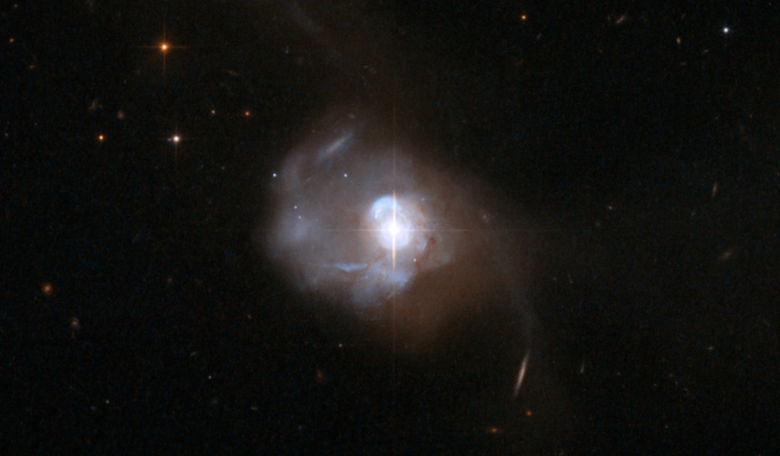In a far-off galaxy with a name apt enough for a sci-fi film, astronomers have for the first time detected molecular oxygen beyond the Milky Way and it has turned up in the outflows of gas near an Active Galactic Nuclei (AGN) - one of the most powerful objects in the Universe.
As humans, we rely on it to survive and it is found ubiquitously as water just about everywhere that astronomers look, but on its own, oxygen is surprisingly hard to find because it is a very reactive atom; in fact it’s the most reactive of the non-metallic elements.
Only two other instances have been reported of its discovery beyond the Solar System – one in Orion and the other in the Rho Ophiuchi cloud – and never before has it been seen outside the Milky Way.
One current theory as to why there is so little available free oxygen given its widespread abundance is that it is being predominantly locked up in water molecules and then frozen onto dust grains and sequestered away. However, the lack of detections means a comprehensive picture of oxygen chemistry in different interstellar environments is still missing.
Now, based on observations with the IRAM 30 metre telescope located in the Spanish Sierra Nevada and the Northern Extended Millimeter Array Interferometer, a team headed by Junzhi Wang at the Shanghai Astronomical Observatory Chinese Academy of Sciences, could help unlock the mysteries surrounding O2 as they have reported the first extragalactic detection of this elusive molecule in a quasar more than half a billion light-years from Earth.
Quasars are a type of extremely luminous AGN. They derive their energy from material spiralling in towards an enormous black hole at the center of a galaxy forming a disk called an accretion disk. As the gas and dust spirals closer in, it accelerates and heats through gravitational and frictional forces to millions of degrees while radiating enormous amounts of energy as it is swallowed up out of sight.
Quasars and AGN are also synonymous with powerful jets, which can blast outwards at opposite ends from the disk at nearly the speed of light and it was within a high velocity molecular outflow that Wang and colleagues spotted the lung-friendly gas in a galaxy called Markarian 231.
“The detected O2 emission is located in regions about 10 kpc (kilo parsec) away from the center of Mrk 231 and may be caused by the interaction between the AGN-driven molecular outflow and the outer disk molecular clouds,” write Wang and colleagues in their paper.
At a distance of 172 Megaparsecs (Mpc) or 561 million light-years away, Mrk 231 is the nearest quasar and the most luminous ULIRG (Ultra-Luminous InfraRed Galaxy) in the local Universe, write the authors in their research paper recently submitted to The Astrophysical Journal.
The team's analysis of the data showed that the abundance of oxygen, compared to hydrogen, was around 100 times higher than that previously found in Orion. In this particular instance the freely available O2 was thought to be the result of a shock wave passing though the nebula, shaking free the water trapped on dust molecules and breaking it up into its constituent parts.
As the molecular outflows in AGN can also produce continuous shocks, the same processes might be happening in Mrk 231 just on a larger scale, say the team.
Once liberated and in its molecular form, O2 is thought to help AGN-driven outflows cool down, which in turn could allow other chemical reactions to take place. However, more observations are still needed before a broader understanding of the role O2 plays in cosmo-chemistry can take shape.
The authors would also like
This first detection of extragalactic molecular oxygen will go some way in helping scientists to understand the role O2 plays in cosmo-chemistry
Further observations of O2 in other galaxies are now needed to help answer why the molecule is in such high abundance in regions several kiloparsecs away from the center of galaxies, but also conclude the team.
In about one out of ten AGN, the black hole and accretion disk produce narrow beams of energetic particles which are ejected outwards at nearly the speed of light in opposite directions away from the disk.
Earth has been oxygenated for about 2.3 billion to 2.4 billion years, and levels began to creep up at least 2.5 billion years ago, according to a 2007 NASA-funded studies
despite repeated searches to find the third most common element in the cosmos, no one has ever detected molecular oxygen beyond our galaxy — until now.











